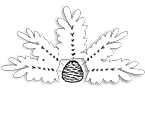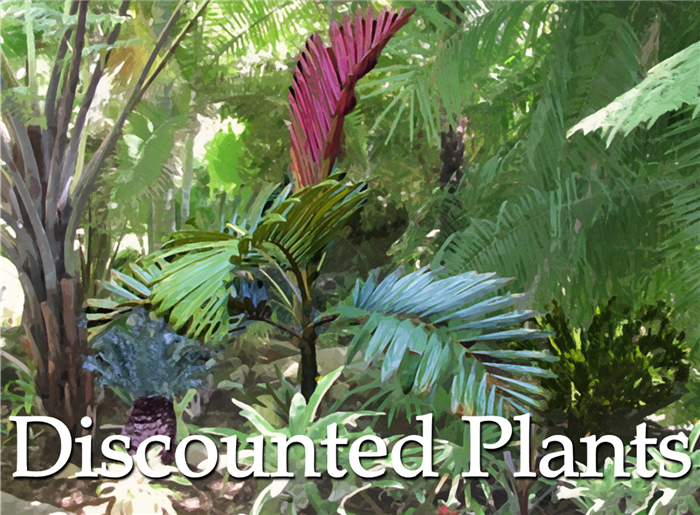ROYSTONEA REGIA
The Cuban Royal Palm Tree
Fast Growing, Elegant and Tall Palm Tree with a Swollen Base
by Phil Bergman
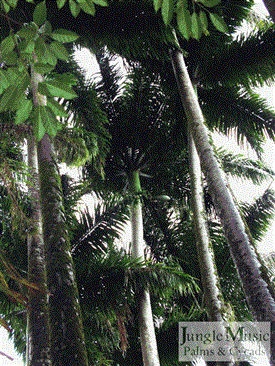
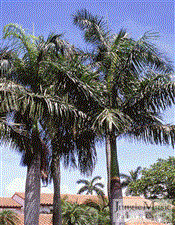
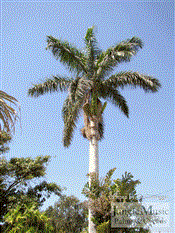
Description of Article on The Royal Palm
Roystonea regia, the Cuban Royal Palm, is quick growing, majestic and tall, single trunk and crown shafted palm – it is known the world over. It is a centerpiece palm used as a single specimen in private gardens, for lining a long driveway or parkway, or for size and grandeur in a botanical garden. Historically, Californians did not think it could be grown here. But, in the last fifty years there are at least a hundred specimens being grown throughout Southern California. This article introduces this spectacular palm species and gives cultural information to help the reader.
Introduction
Roystonea is a genus of “Royal Palms”. There are multiple types or species of Royal Palms with native habitats stretching from south Florida to South America. Of these multiple species of “Royal Palms”, the most common species and the one you are most likely to see is the Cuban Royal Palm, often just referred to as the Royal Palm. It’s scientific (Latin) name is Roystonea regia. In years past the plants native to southern Florida were thought to be a separate species, “Roystonea elata”. However, further study proved that these Florida palms were indeed identical to the Royals in Cuba, R. regia. Thus, Roystonea regia and elata are the same species. Species native to some Caribbean localities and South America are different morphologically and have different species names. I’ll show a few pictures of other species below, but the main emphasis of this article is on Roystonea regia, the Royal Palm. Also included is cultural information on how to grow Royals.
DESCRIPTION OF ROYSTONEA REGIA
Common Names:
The Royal Palm or The Cuban Royal Palm
Type of Plant:
This is a single trunk, pinnate palm (feather palm) with a prominent, long and green crown shaft.
The Genus: Roystonea is a genus containing about ten or eleven species with distribution from south Florida through Central America, South America and some Caribbean islands. This article is concentrating on the species Roystonea regia. The Cuban Royal Palm is the most commonly seen Royal Palm worldwide. In their own localities, all the different species of Roystonea are called the “Royal Palm” but local inhabitants. But, their species may look a bit different than the Cuban Royal.
Native Habitat Roystonea regia:
Native habitats includes Southern Florida, Cuba, Central America and some Caribbean islands.
Sun Tolerance:
In almost all areas of Southern California, this species demands full and hot sun. It hotter desert areas it is possible to grow Royal Palms in less sun, but not shade.
Mature Height:
In our locality, heights are difficult to predict as many palms are not fuller mature and old. One should certainly expect heights of forty feet or more in many decades. Plants in habitat are taller than this, sometimes more than seventy feet.
Leaves:
The leaves of the Roystonea regia average about ten feet long. They are not armed. They have short petioles and the leaf color is green. In cross section the leaves are rather plumose (fluffy). Below the leaves is a long, smooth tubular crown shaft.
Crown Shaft:
This prominent bulge in the upper trunk is just below the leaves. Just below this structure is where one would see flower spikes. This crown shaft is smooth, green in color and rather elongated compared to some crown shafts. It is very attractive and one of the hallmarks of the species. The crown shaft is formed by the most proximal part of the entire leaf stem wrapping around the trunk.
Leaf Color:
The leaves are a definite green in color. They are never silver or white and both sides of the leaflets are the same color..
Trunk:
The trunk of Roystonea regia is one of the other hallmarks of the species. It has a white or gray color and typically swells at the base, sometimes showing some random bulging further up the trunk with time. Basal diameter of the trunk can reach 30 inches or more. Mid trunk diameter probably averages 18 inches with greater diameter where it bulges.
Self Pruning Characteristic:
Typical of crown shafted palms, when leaves age and turn brown, they simply fall to the ground. This is good from a labor point of view. But, it also poses a bit of risk to a delicate garden floor below or people.
Leaf Crown:
The crown of leaves of the Cuban Royal when viewed from afar tend to hang downwards and sometimes even hang close to the trunk, almost giving a 360 circle to the crown as a whole. Compare this to the South American Royal (Roystonea oleracea) which classically has a crown of leaves that rarely extend downwards pass the “mid-crown point”. Thus the latter crown of leaves is the top 180 degrees of a circle.
Cold Tolerance:
The Cuban Royal will tolerate a freeze. It’s minimal tolerated temperature is somewhere around 25 degrees F., similar to a King Palm. But, there are living plants in areas other than Southern California where this species has tolerated (or at least survived) temperatures colder than 25 degrees.
Heat Tolerance:
Roystonea regia is remarkable how it tolerates high heat. People in desert areas such as Palm Springs and Phoenix are successfully growing this species if it is given adequate water. This would be a difficult palm to grow in an area where there is no summer heat.
Fruit:
The fruits of the Royal Palm are small in size, typically a dark purple or black, with an even smaller tan colored seed under the fruit.
Growth Rate:
Medium to fast growth rates are typical. Growth is much faster in the ground than in a nursery pot.
Other Species of Roystonea:
As mentioned above, there are at least ten or more other species. This number varies with the taxonomist. Examples would be Roystonea violacea (Cuba), Roystonea princeps (Jamaica), Roystonea oleracea (South America), Roystonea borinquena (Puerto Rico and Hispaniola) and others. Pictures are shown below of some of the other species.
Landscape Usages:
Cuban Royals look great no matter where and how you plant them. They can be used as a centerpiece specimen. They are wonderful along streets or long driveways. Most folks in Southern California plant them as a single, sometimes on both sides (opposing) of a garden area. Some have even planted small colonies of three together although this is rarely seen.
Other Comments:
Some local landscape architects in their plans call for huge Royals with ten feet of brown trunk. Unfortunately, these are rarely available in our locality. Such plants would require being field grown and later dug. Digging of field grown plants has its risks with an anticipated 50% mortality rate with the Royal Palm. Digging has better results in Florida (or other tropical areas), but such dug Florida plants cannot be legally imported into California. But, as Royals are quite fast growing, we recommend getting the size you can. In a matter of a few years, your plant will be much larger.
PHOTOGRAPHS OF GARDEN OR DOMESTIC SPECIMENS OF ROYSTONEA REGIA, THE CUBAN ROYAL PALM
All photos in this section are only the classic Cuban Royal Palm
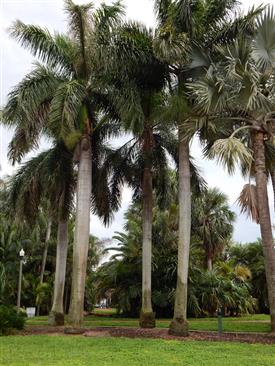
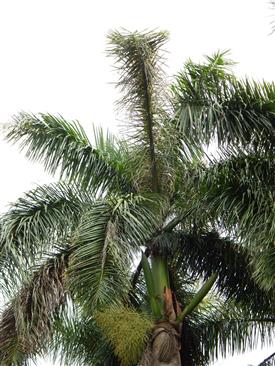
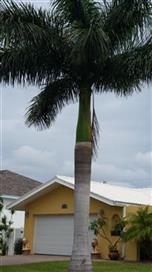
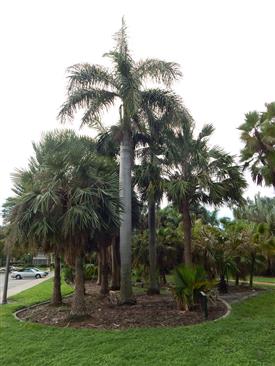

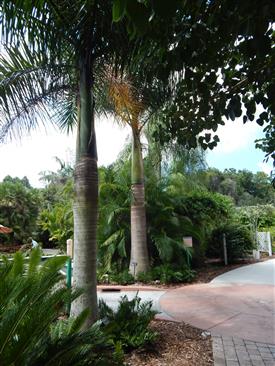
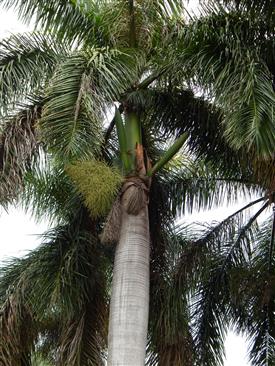
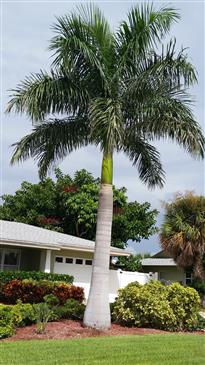
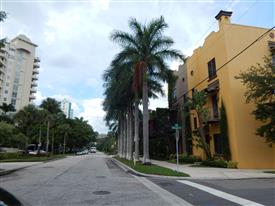
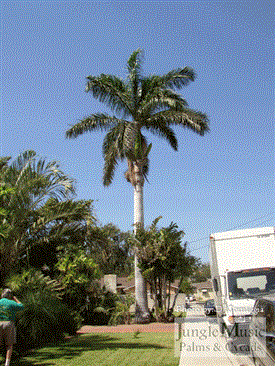
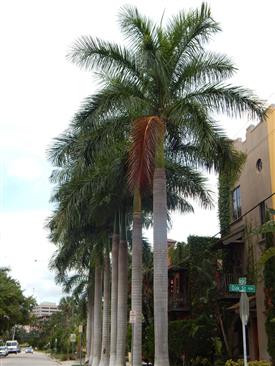
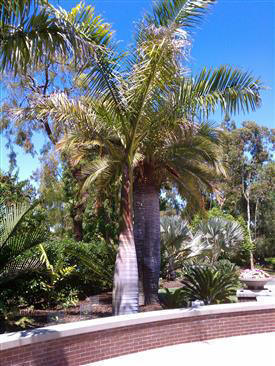
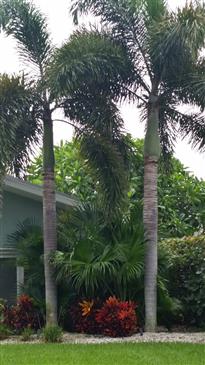
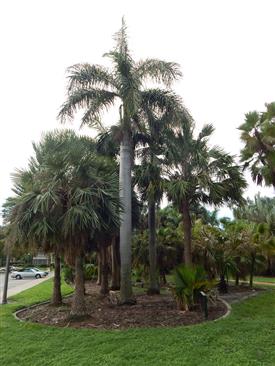
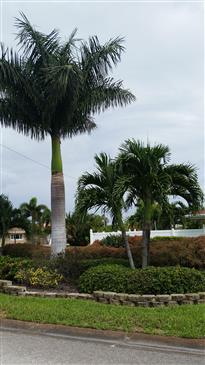
A CLOSER LOOK AT THE TRUNK OF ROYSTONEA REGIA, THE CUBAN ROYAL
As mentioned above, the trunk of the Royal Palm is typically swollen at the base. And, above the base the diameter is not totally uniform. There are areas of swelling and contraction. The pictures below demonstrate characteristics of Roystonea regia trunks. Also note the very light, gray/white color of the trunk, another characteristic.
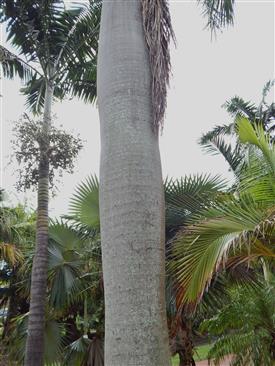
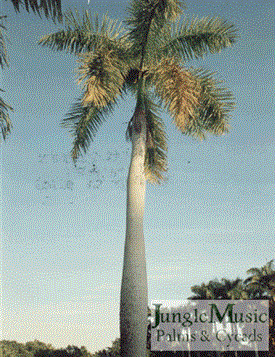
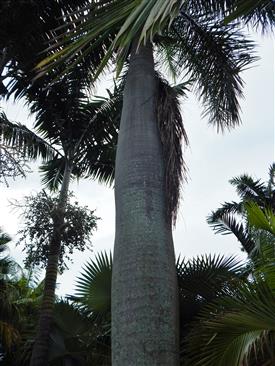
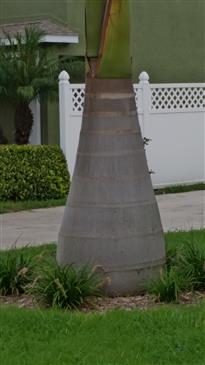
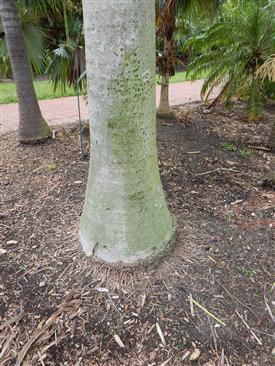

A CLOSER LOOK AT THE CROWN SHAFT OF ROYSTONEA REGIA
The crown shaft of the Royal Palm is a clean, prominently green color and long and smooth. It is quite beautiful and just below the crown of leaves. When flower spikes emerge to make seeds, you’ll see them right below the crown shaft. The crown shaft is actually formed by the base of the leaf at its point of attachment to the trunk. Think of that leaf “wrapping around the trunk completely”. Even if the leaf has been cut, crown shaft leaf bases fall off the trunk on their own or can be easily removed if the leaf is dead.
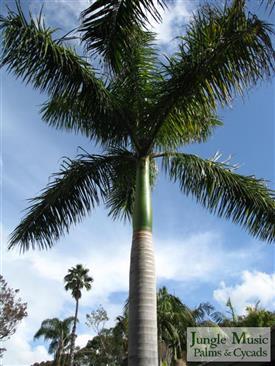
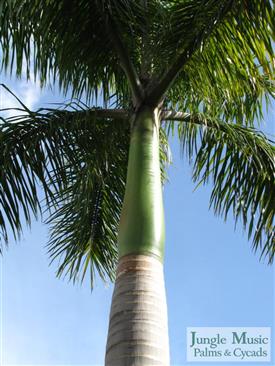
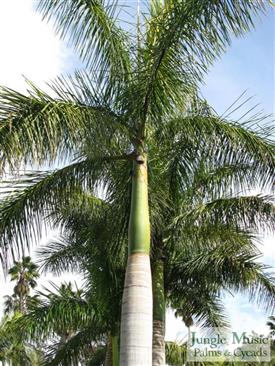
ROYSTONEA, OTHER SPECIES, SHOWN BELOW
BUT, ALL ARE TYPES OF “ROYAL PALMS”, IN THE GENUS “ROYSTONEA”
(Species names given below each photo)
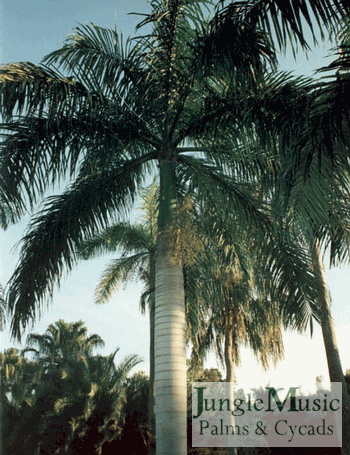
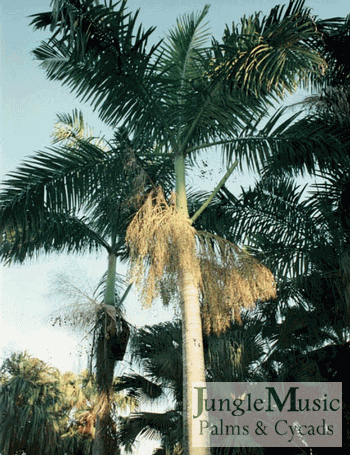
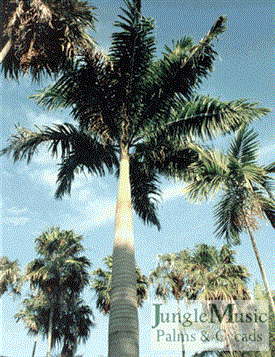
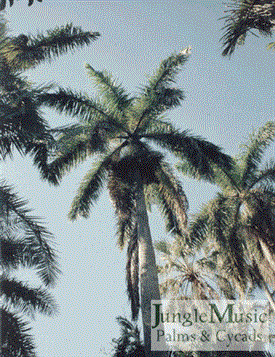
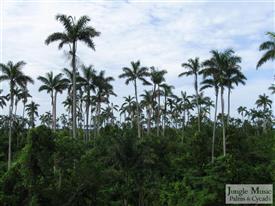
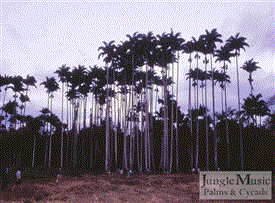
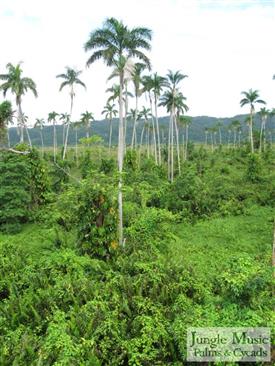
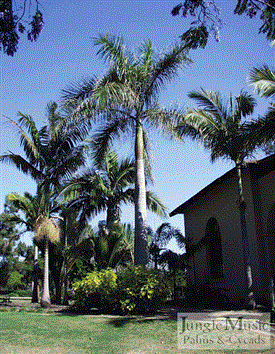
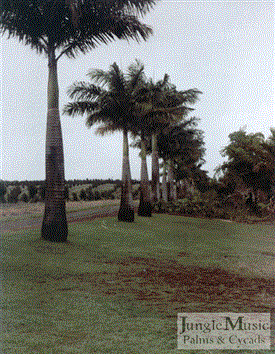
Nursery Plants Photographs – Royal Palm, Roystonea regia
Our nursery routinely has available Royal Palms (Roystonea regia) in one size or another. We also carry other species of “Royal Palms” like R. borinquena, princeps and others. We offer anything from seedlings in band containers to larger boxed plants. Availability of sizes on Royals tends to change quickly as some people will buy five or six at one. time. But, we work to replenish our inventory. 5g and smaller are quite easy to mail order. On the larger 30 or 36 inch box size we work with a supplier who can deliver these plants. They weight about 1500 pounds.
15g size
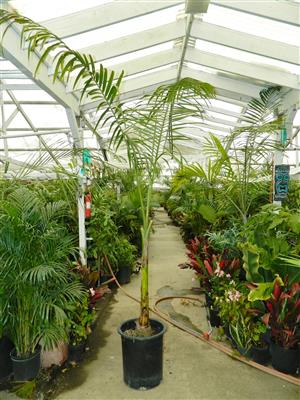
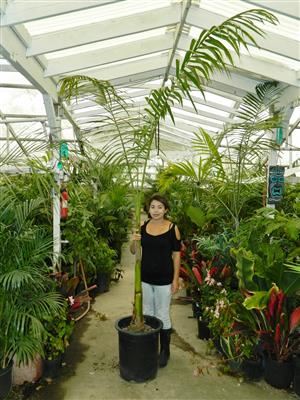
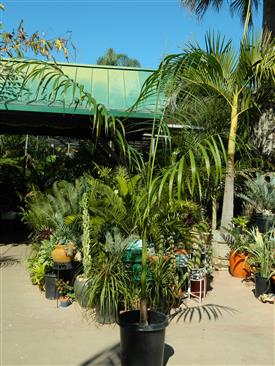
5 gallon size (shippable)
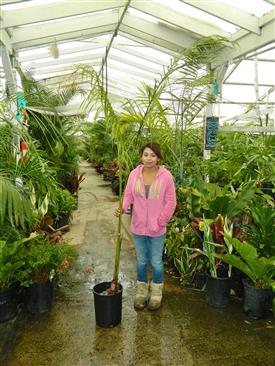
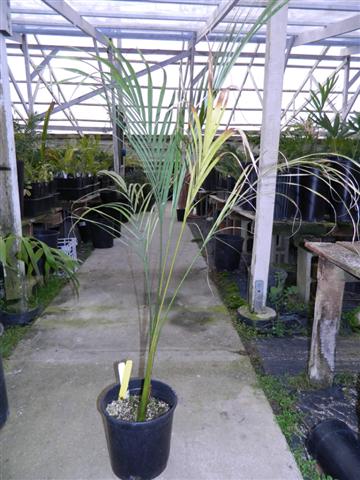
25 gallon and larger boxed sized larger plant with huge amounts of trunk (available on request)

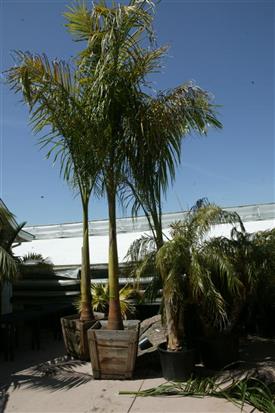
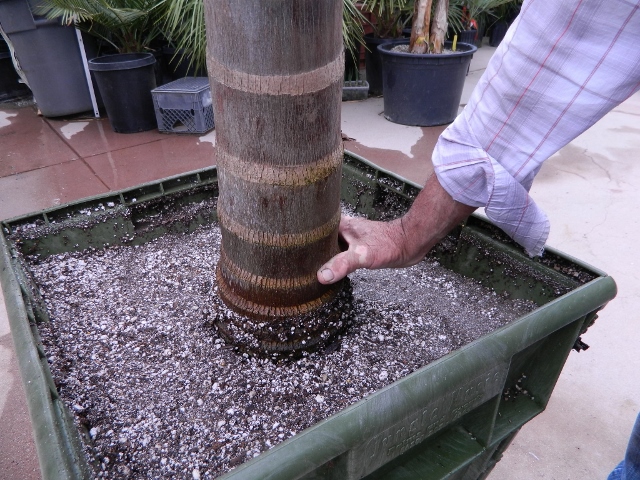
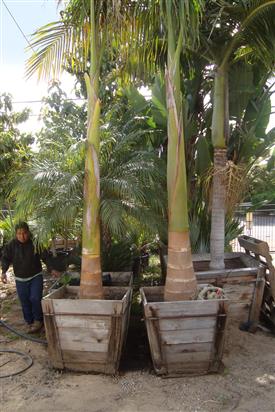
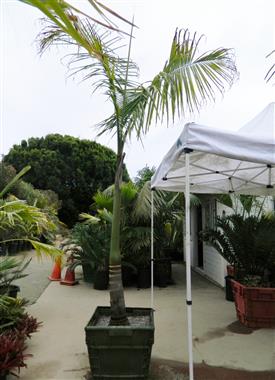
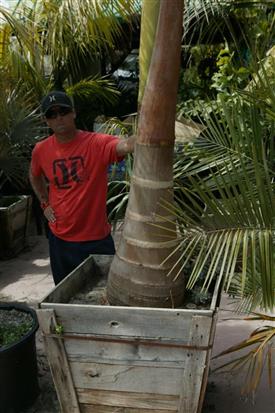
CONTACT US:
TO EMAIL US WITH ORDERS OR QUESTIONS, CLICK HERE TO EMAIL US
or CALL PHONE NUMBER BELOW
PALM PRICES:
TO SEE OUR PLANT PRICE LIST, CLICK HERE
OTHER ARTICLES:
FOR OTHER INFORMATIVE ARTICLES ON PALM TREES, CLICK PALM INFORMATION
OR
GO TO OUR PALM TREE ENCYCLOPEDIA
Phil Bergman
Jungle Music Palms, Cycads and Tropical Plants
Below are all photographs of Roystonea regia
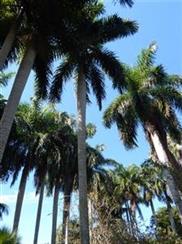
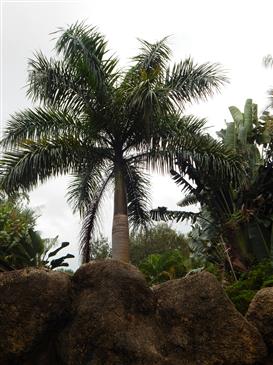
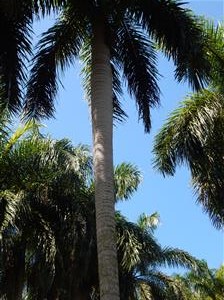
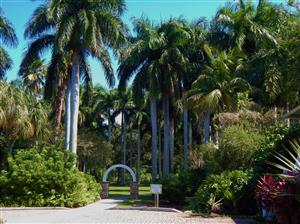
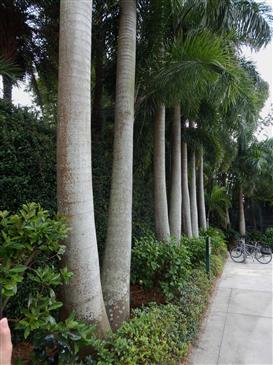
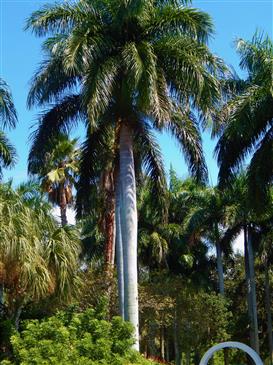
| Email: | phil.bergman@junglemusic.net |
| Website: | www.junglemusic.net |
| Nursery Location: | 450 Ocean View Ave., Encinitas, CA 92024 |
| Nursery Phone: | 619 291 4605 |
| Nursery Hours: | Monday – Saturday, 9:00AM-4PM Sunday typically closed |
| Directions to Nursery: | Freeway Close. Take Freeway 5 to Encinitas (10 minutes south of Oceanside, 30 minutes north of San Diego). Exit Leucadia Blvd West (toward ocean). Immediate left on Orpheus Ave, left on Union St, Right on Ocean View Ave to Nursery 450 Ocean View Ave |
| Mailing Address: | 3233 Brant Street, San Diego, CA 92103 |
- PALM TREES, CYCADS & TROPICAL PLANT BLOG - October 1, 2020
- TRACHYCARPUS
The Windmill Palm - September 30, 2020 - FAN PALMS –
PALMS WITH CIRCULAR LEAVES - September 29, 2020
